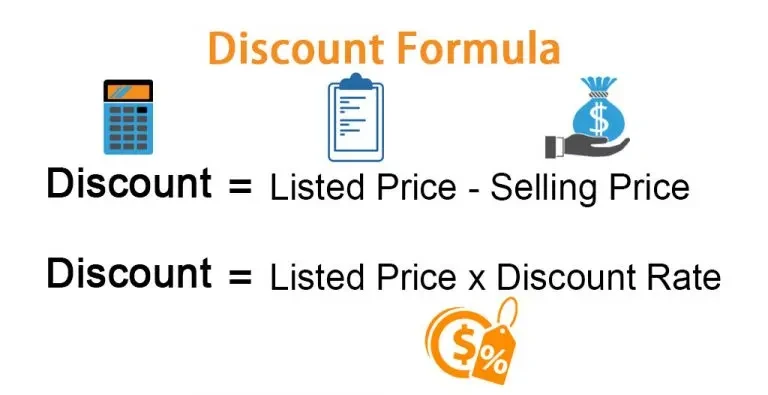
Beyond Basic Math: Mastering Advanced Discount Calculations with Tools
Discounts are more than just a marketing gimmick—they're a pivotal aspect of financial literacy and an integral part of our everyday transactions. Whether you're a consumer, a business owner, or a financial analyst, understanding how to calculate discounts beyond basic percentages is crucial. This post delves deep into online discount calculator, exploring various methods and tools that help in making informed decisions.
Understanding Discount Types

Before we jump into calculations, it's essential to understand different types of discounts:
- Simple Percentage Discounts: These are straightforward calculations where a percentage is deducted from the original price.
- Stacked Discounts: This involves applying multiple discounts consecutively.
- Conditional Discounts: Discounts based on specific conditions, like bulk purchases.
- Seasonal or Time-based Discounts: Discounts offered during certain times or seasons.
- Trade Discounts: Given to distributors or retailers in a supply chain.
Each type requires a distinct approach to calculation.
Calculating Simple Percentage Discounts
The most basic form of discount calculation involves subtracting a percentage of the original price. The formula is:
Discounted Price=Original Price×(1−Discount Percentage100)
Discounted Price=Original Price×(1−100 Discount Percentage)
Example:
If a $50 item is on a 20% discount, the calculation will be:
$50 \times (1 - \frac{20}{100}) = $50 \times 0.8 = $40
Advanced Techniques in Discount Calculation

Stacked Discounts
Stacked discounts involve applying multiple discounts one after the other.
Formula:
Final Price=Original Price×(1−Discount 1100)×(1−Discount 2100)×…
Final Price=Original Price×(1−100 Discount 1)×(1−100 Discount 2)×…
Conditional Discounts
These are calculated based on specific conditions like quantity. Here, the discount changes based on the number of items bought.
Seasonal or Time-based Discounts
Calculation methods remain similar, but these discounts are often dynamic and can change rapidly.
Trade Discounts
These are calculated on the list price and usually involve a series of discounts.
Leveraging Tools for Discount Calculations
Spreadsheets
Excel or Google Sheets can be powerful tools. They can automate calculations and visualize data for better understanding.
Example:
Creating a spreadsheet with different discount scenarios and their impact on prices.
Online Calculators
Various websites offer free tools to quickly calculate discounts. These are handy for quick calculations.
Custom Calculators
Businesses often develop custom calculators tailored to their specific discount structures.
Mobile Apps
There are numerous mobile apps available for discount calculations, useful for on-the-go calculations.
Practical Applications
- For Consumers: Understanding discounts helps in making informed purchasing decisions, ensuring that you're really getting a good deal.
- In Retail: Retailers can structure their discount strategies more effectively, understanding the impact of different discount types on profitability.
- In Finance: Professionals in finance use discount calculations to assess investment opportunities and in pricing strategies.
Tips for Accurate Discount Calculations
- Understand the Terms: Always read the terms of the discount carefully.
- Use Reliable Tools: Choose tools that are updated and accurate.
- Check Calculations Manually: It’s good practice to occasionally do manual calculations to ensure accuracy.
- Stay Informed: Discounts can change, especially seasonal ones. Stay updated with the latest information.
Free Tools: Free JPG To Word Tool Online | Free Related Keywords Finder Tool Online
Conclusion
Discount calculation, though seemingly straightforward, can quickly become complex with different types and conditions. By understanding these nuances and leveraging the right tools, one can master the art of discount calculation. This not only aids in smarter financial decisions but also enhances one's analytical skills in a world where numbers often dictate choices.
Remember, the key to mastering discount calculations is practice, understanding the context, and using the right tools.
Look into more additional free tools: SEO Tagging Tools: Boosting Your Website's Visibility
Frequently Asked Questions
1. What is a stacked discount?
Stacked discounts involve applying multiple discounts in succession to a product's price. It's calculated by consecutively applying each discount to the adjusted price.
2. How do you calculate a simple percentage discount?
Calculate by multiplying the original price by the discount percentage and then subtracting that amount from the original price.
3. Can discounts be combined?
Yes, discounts can be combined in many cases, such as stacking manufacturer and store discounts. However, this depends on the retailer's policy.
4. What are conditional discounts?
Conditional discounts are applied based on specific conditions, like purchasing a minimum quantity or buying during a specific time.
5. How do trade discounts work?
Trade discounts are offered to retailers or wholesalers and are typically calculated on the list price or the manufacturer's suggested retail price (MSRP).
6. What tools can help with discount calculations?
Tools such as Excel, Google Sheets, online discount calculators, custom business calculators, and mobile apps are helpful for discount calculations.
7. Are online discount calculators accurate?
Most online discount calculators are accurate for basic calculations, but for more complex scenarios, manual verification or professional tools might be needed.
8. How do seasonal discounts differ from regular discounts?
Seasonal discounts are offered during specific times of the year, like holidays or end-of-season sales, and are usually part of a strategic marketing approach.
9. What should consumers consider when evaluating discounts?
Consumers should understand the terms of the discount, calculate the final price, and assess if the discount truly offers value.
10. Why is understanding discount calculations important in finance?
In finance, discount calculations are crucial for pricing strategies, investment analysis, and understanding market trends. They help in making informed financial decisions.



